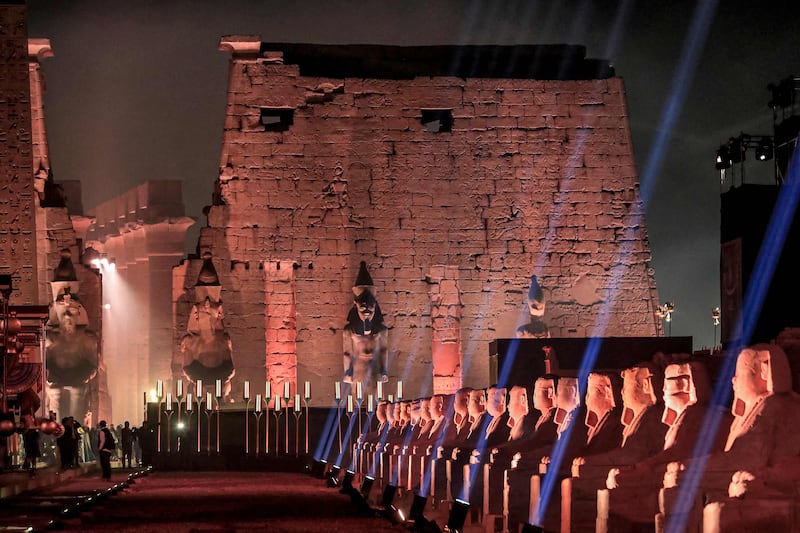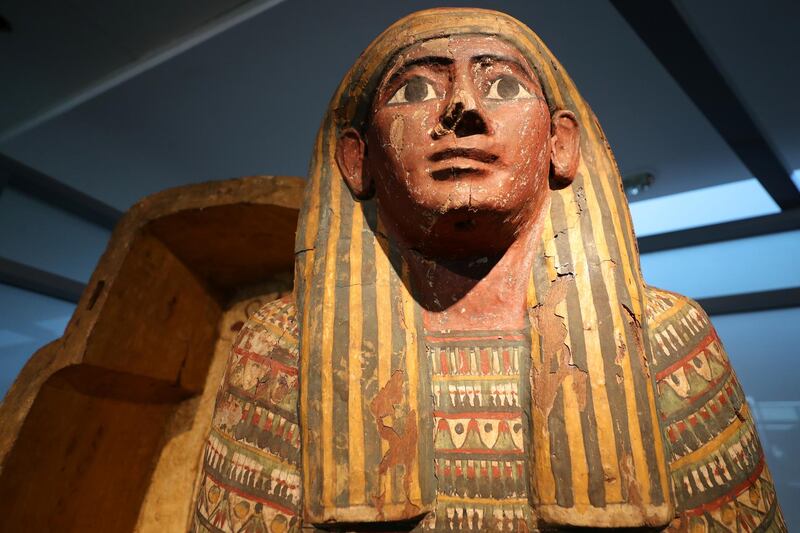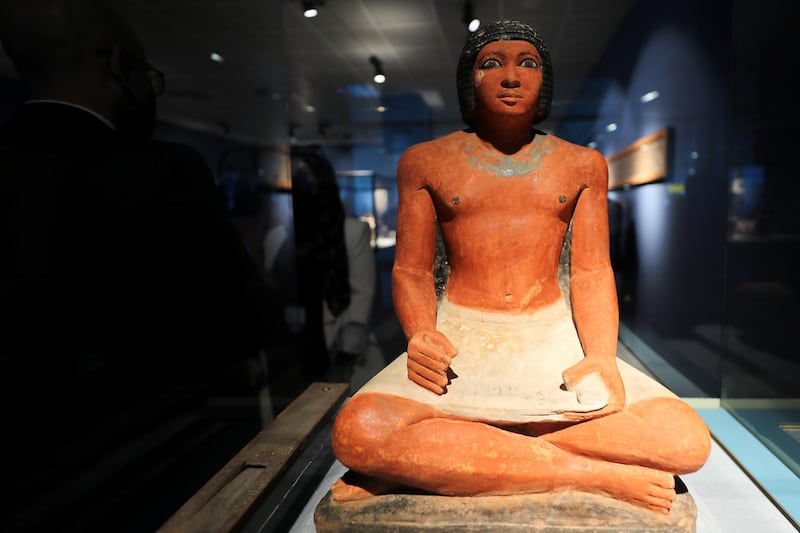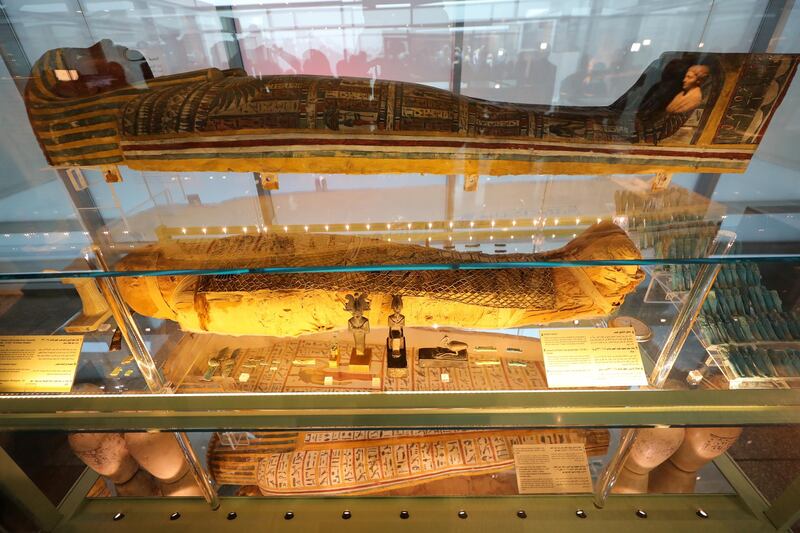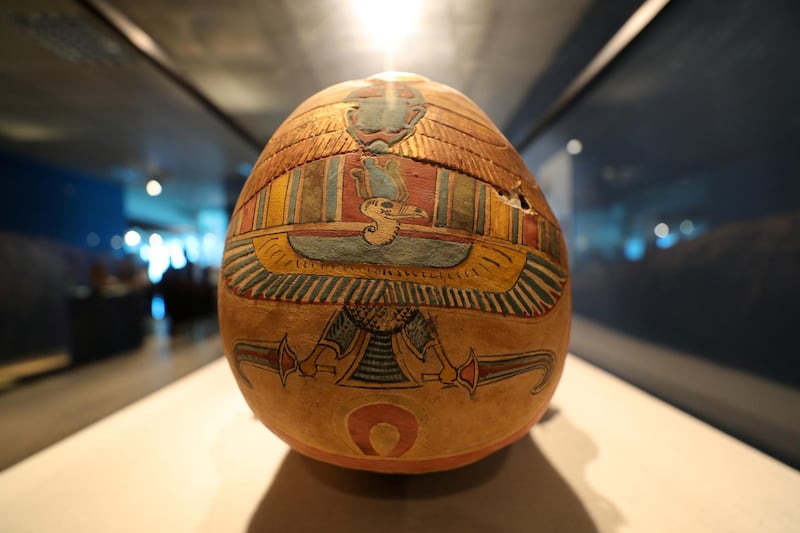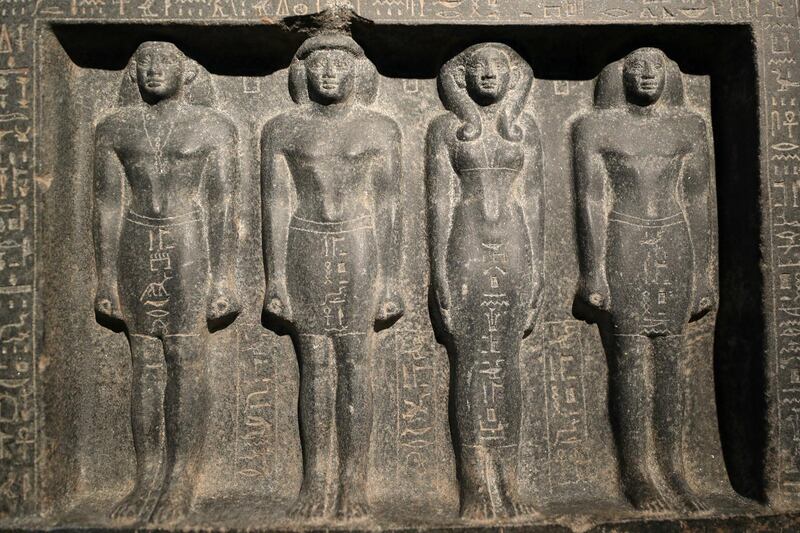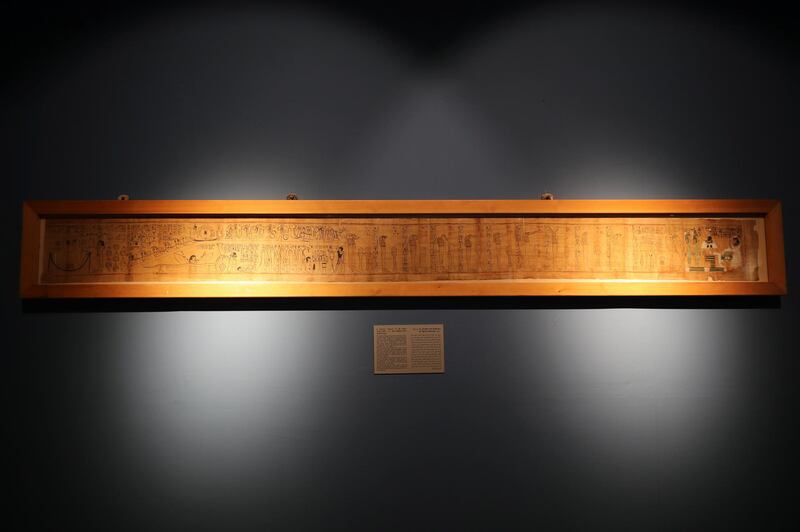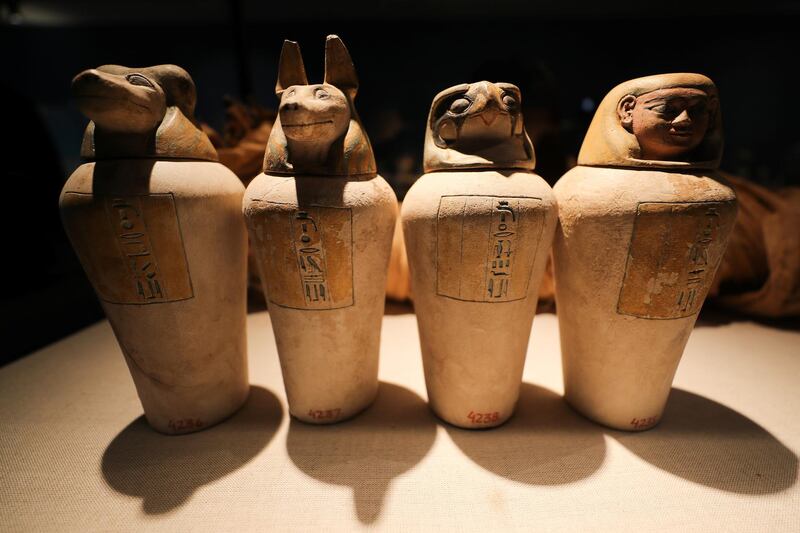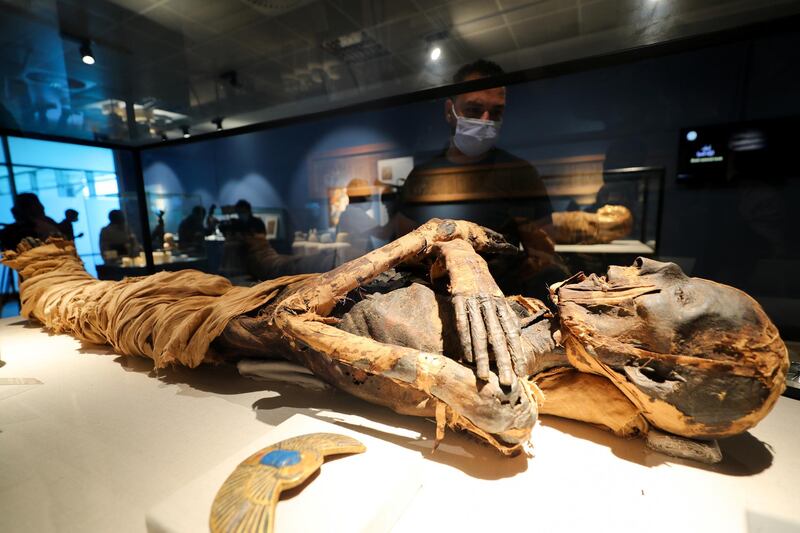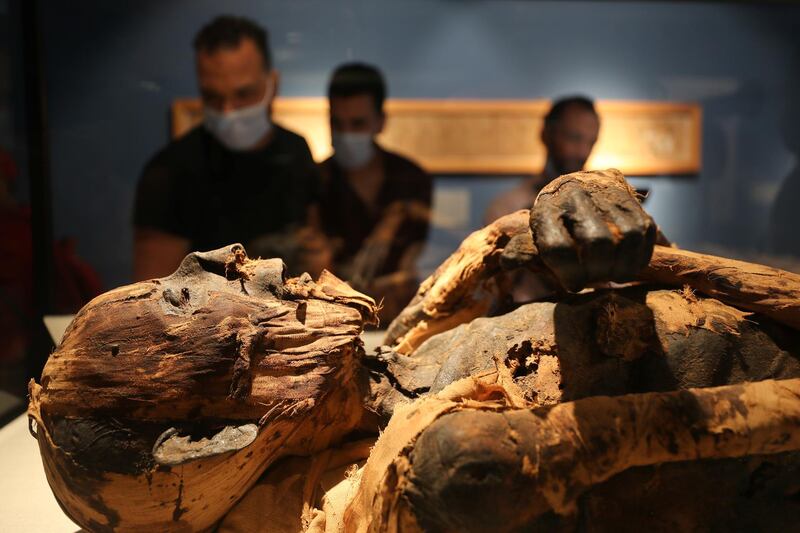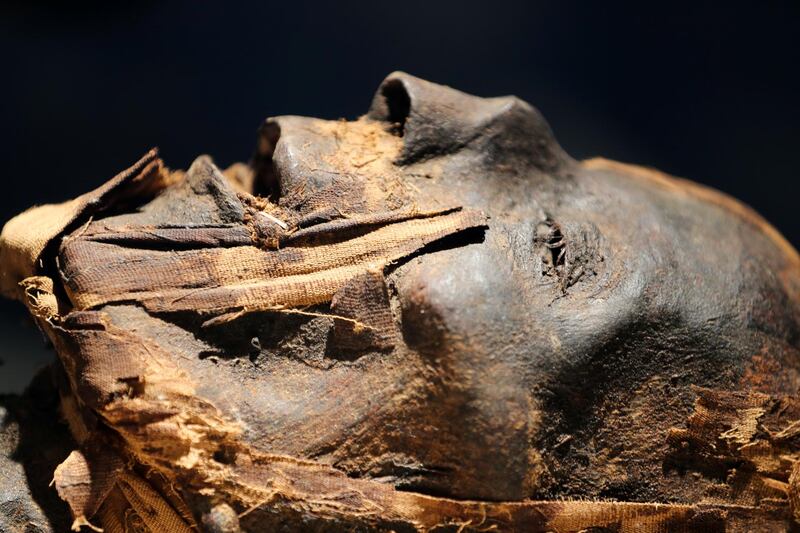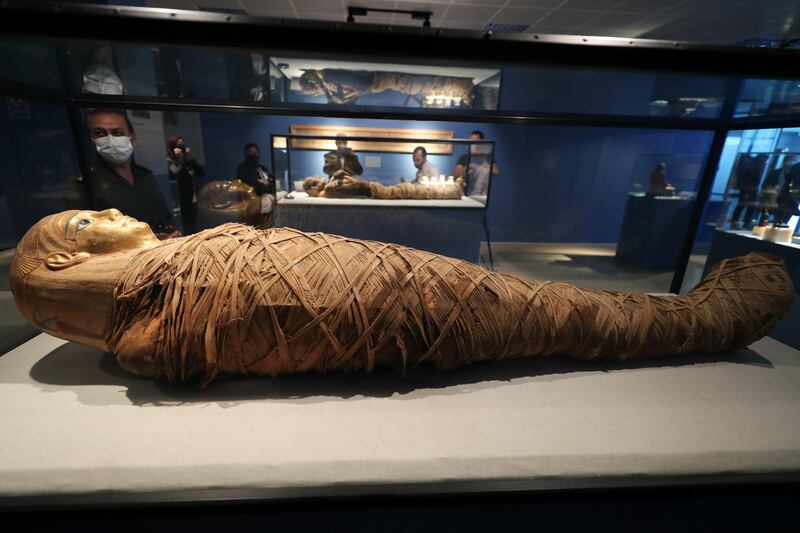Egypt has spent billions of pounds opening new museums, restoring archaeological sites and putting on two spectacular parades in a bid to preserve and promote its cultural heritage, its tourism and antiquities minister has said.
“Even during Covid when we didn’t have tourists, I’m getting the full budget I’m asking for…I’m getting billions and billions of Egyptian pounds,” said Khaled El Enany at the American University in Cairo on Tuesday night. “We are paying like we never paid before to preserve our heritage.”
The country has experienced a cultural renaissance in recent years, with government support, he said, speaking at the annual Nadia Younes Memorial Lecture.
Tourism, which accounts for about 12 per cent of Egypt’s gross domestic product, on average, has suffered badly during the pandemic. Travel restrictions and lockdowns wiped out $17.6 billion from the Egyptian economy in 2020, according to the World Travel and Tourism Council.
But the government is counting on its greatest asset to cancel out these losses: a priceless treasure trove of antiquities.
Egypt has more than 2,500 archaeological sites, 60 per cent of which are ancient Egyptian, while the remainder belong to the Abrahamic religions, comprising 40 per cent Islamic, Coptic, Jewish and modern sites.
“Among the 2,500 sites in Egypt, only dozens are visited by tourists,” Mr El Enany said.
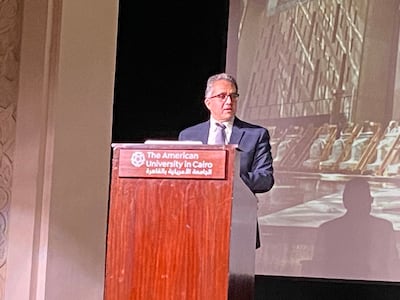
He became antiquities minister in 2016 and was appointed the first tourism and antiquities minister in 2019 when the ministries merged.
In 2017 he requested 1.3 billion pounds ($80 million) to revitalise the museum sector, re-opening shuttered sites and building new museums at a cost of 40m to 70m pounds ($2.5m to $5m) each.
Among them are the National Museum of Egyptian Civilisation, which opened in 2017, and the Naguib Mahfouz Museum in Old Cairo, that opened in 2019. Hurghada Museum, Sharm El Sheikh Museum, Kafr El Sheikh Museum and the Royal Carriages Museum in Downtown Cairo all opened in 2020.
Museums inaugurated in smaller cities included Sharqia, Marsa Matrouh and Sohag in 2018, and Tanta in 2019.
“When I open museums in Sharqia, Tanta, Sohag, El Minya, it doesn’t bring me tourists, but it’s very important for awareness and to preserve the Egyptian identity,” Mr El Enany said.
Opening “very soon” and “ready 100 per cent” is the Capitals of Egypt Museum in the New Administrative Capital east of Cairo, he said. The museum will highlight the stories of the different cities that have served as Egypt’s capital.
Other planned openings this year include the Mohamed Ali Palace in Cairo, the Greco-Roman Museum in Alexandria and the highly anticipated Grand Egyptian Museum (GEM).
GEM is a separate budget in itself, costing about $1bn for the 490,000-square-metre building, a sum that covers the 55,000-plus artefacts, as well as security.
Mr El Enany said the museum will open in the second half of the year if coronavirus-related conditions are stable, hinting that it could coincide with the 100-year anniversary of Tutankhamun tomb's discovery in November.
“I’m receiving requests every day from all over the world to give them the exception to visit the gallery. I promise you nobody will visit the galleries before the official opening,” he said. “It’s a surprise.”
Mummies' parade
Last year, the Pharaohs’ Golden Parade in April that transported 22 royal mummies from the Egyptian Museum in Tahrir Square to the National Museum of Egyptian Civilisation and the Avenue of Sphinxes parade in Luxor in November made international headlines.
“It was a wonderful opportunity to show the world that we respect our heritage and our ancestors,” Mr El Enany said.
He had submitted the idea of the mummies’ parade to President Abdel Fattah El Sisi in 2019, with planning taking more than 19 months.
Both events were seen as a success on the global stage and a source of pride for Egyptians.
“I’ve been a minister for six years, and when I meet someone, they say, thank you and congratulations for the two parades,” Mr El Enany said.
Mr El Enany has championed several restoration projects, such as the Al Azhar mosque in March 2018, the Eliyahu Hanavi synagogue in Alexandria in January 2020 and the Baron Empain Palace in Heliopolis in June the same year.
Major archaeological discoveries have also taken place during his time in office, such as an Egyptian mission discovery of more than 150 coffins in Saqqara in October and November 2020.
There are around 250 archaeological missions from more than 25 countries working in Egypt, as well as about 80 Egyptian archaeological missions.
“I’m very proud that the majority of archaeological discoveries in the last few years were done by Egyptian missions,” Mr El Enany said. “This is a renaissance for Egyptian archaeology as well.”
He said another discovery will be announced by the Supreme Council of Antiquities as soon as March “that will attract a lot of attention from the world”. He did not share further details.
The Nadia Younes Memorial Lecture has hosted a range of speakers from the world of global affairs since 2005, such as former United Nations Secretary-General Kofi Annan and the first female president of Ireland Mary Robinson. It commemorates Ms Younes, who had a 30-year career at the UN and was tragically killed in the bombing of the UN headquarters in Baghdad in 2003.
